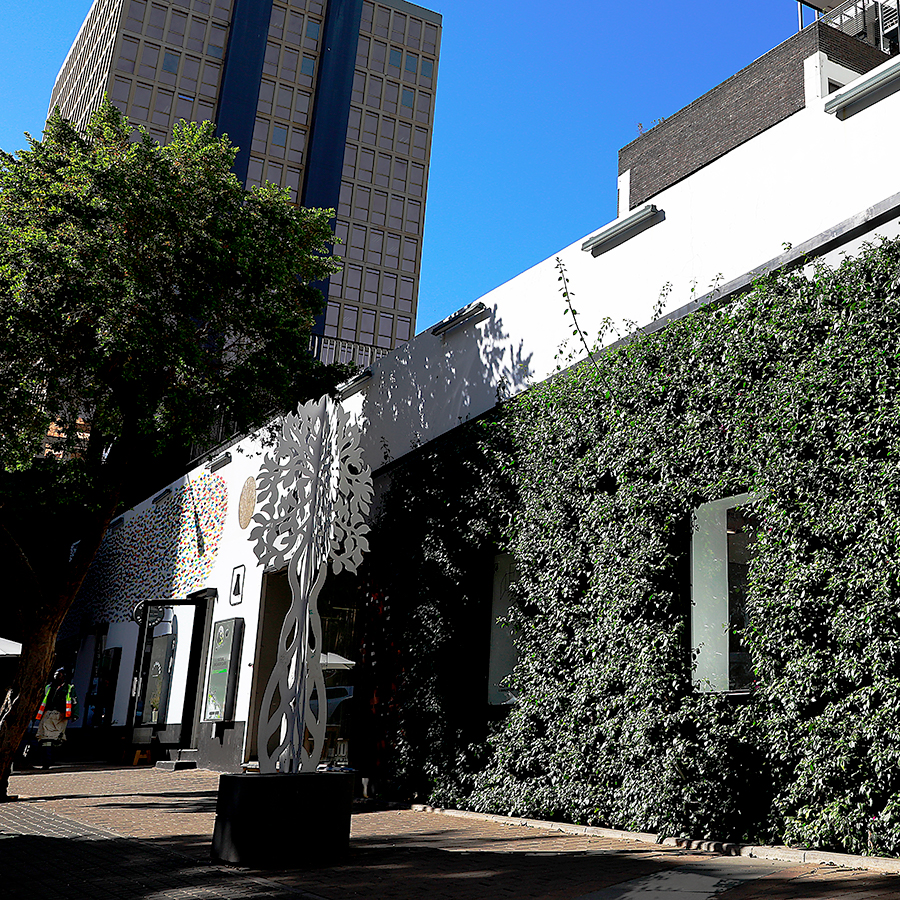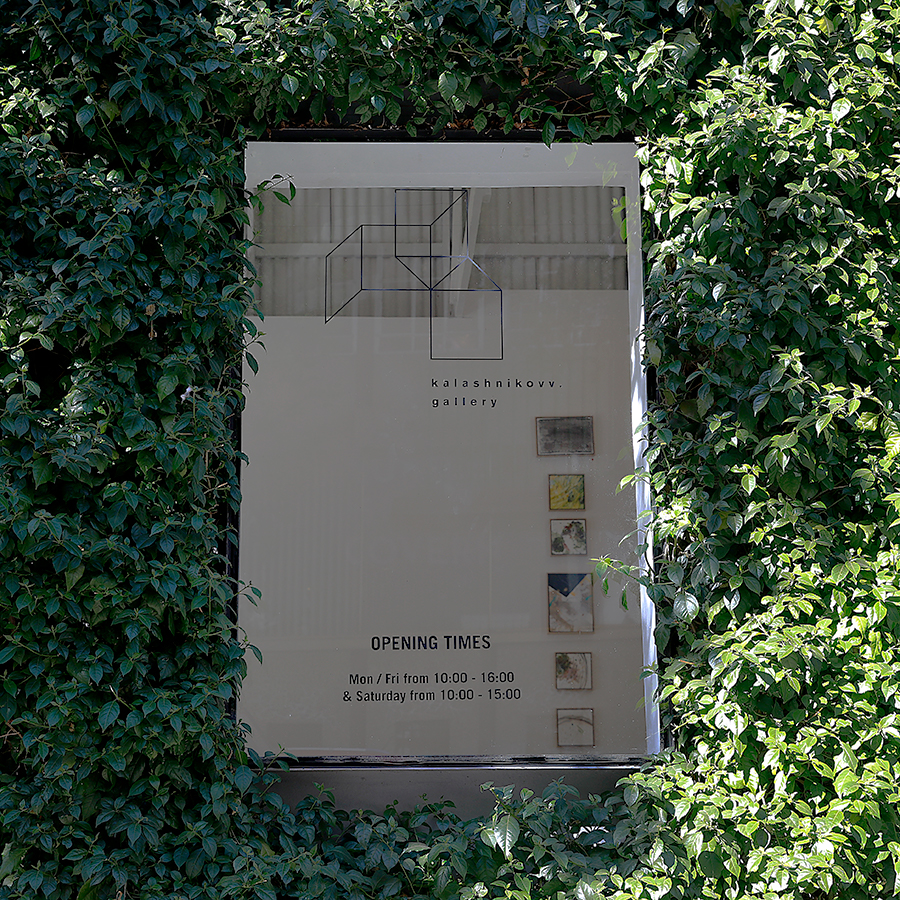

INTERVIEW WITH KALASHNIKOVV GALLERY


Olivia Barrell and Mia Louw from the cur8.art team in conversation with co-founder M.J Turpin of Joburg-based Kalashnikovv Gallery, founded in 2013, discussing the origins of the gallery, its overall ethos and definition as an artist-run space.
HOW WAS KALASHNIKOVV GALLERY FOUNDED?
Images courtesy of KALASHNIKOVV Gallery
The gallery was founded seven years ago by two friends essentially; myself and Matthew Dean Dowdle – both with different backgrounds, respectively in art and music. We initially organised and curated a multi-creative festival called Neon showcasing fashion, art and music. Afterwards, we realised how successful the art side of the festival had been and six months later, we decided to create a more concrete entity and that was the birth of Satellite Spaces/The Untitled Gallery, which then toured the inner city creative precincts of Johannesburg and then finally found its home in Braamfontein and Kalashnikovv gallery was born.
IS THERE A SIGNIFICANCE TO THE NAME ‘KALASHNIKOVV’?
The name reflects the notion of revolution, primarily in an African context. By extension, the notion in a gallery context to try revolutionise the ‘white cube’ gallery concept. We wanted to shake things up by creating an artist-run space from the onset. It is not as violent as people assume but we seek to challenge conventions.
KALASHNIKOVV GALLERY IS BOTH A PROJECT AND GALLERY SPACE, CAN YOU TELL US A BIT MORE ABOUT THIS?
At Kalashnikovv, we dedicate 50 percent to our experimental project space and the other half is dedicated to a commercial gallery space. We have divided our physical space at Kalashnikovv into an experimental project room on the one hand and the main gallery space on the other hand for commercial exhibitions. The project room represents more of an incubator space for emerging artists or younger talent producing mainly process-based work – this is as important to our programme at Kalashnikovv as the commercial gallery side.
CAN YOU TELL US MORE ABOUT KALASHNIKOVV’S RECENTLY LAUNCHED COLLECTORS’ INCUBATOR?
CLICK HERE TO VIEW COLLECTORS’ INCUBATOR
We are trying to create a way of inspiring or stimulating young people to collect and appreciate art. The idea is to grow with the young artists and make this more accessible, whether it be through more accessible price points or conceptual frame working. Another concept that we have is that of Artefacts – playing with the idea or reality of accessibility and affordability. Given that Kalashnikovv has been around for several years, many of our artists have grown from emerging to mid-career artists. In addition, we have started to work with various established artists whose price points are no longer accessible for many collectors. Based on the year that we find ourselves in, that of COVID, we were obligated to do many “digital renovations” if you will – one of them was ecommerce, another Collectors’ Incubator and another Artefacts. We will also be releasing another soon called Kalashnikovv Editions which will be based on print making, primarily releasing silk screens at this stage bi-monthly with a different artist each time. We launched the website with a screen print by Ayanda Mabulu.
At Kalashnikovv, we hope to make the art world more accessible by breaking down traditional gateways and creating new entry points, in multiple ways – from the way artwork is produced to the way art is accessed.
WHAT ADVISE WOULD YOU GIVE TO NEW ASPIRING ART COLLECTORS?
It is a cliché but buy with your heart, eye and proper research – find an ideal place between the three.
HOW WOULD YOU PERSONALLY DEFINE THE ROLE OF AN ART GALLERY?
The role of a gallery is constantly evolving. Especially as we find ourselves in a digital and social media era – the definition and need of a gallery are becoming increasingly blurred. I find that an artist becomes more acutely aware of the gallery’s function as the artist becomes more successful. The ability to produce projects and manage logistics becomes very important to the artist so that they can focus on their primary goal, which would be to create art.
HOW DID KALASHNIKOVV GALLERY DEAL WITH LOCKDOWN?
The manner in which art is viewed digitally was the first difficulty, especially for three-dimensional mediums and artworks that are layered or rely on impasto-based techniques. But with the current circumstances, we have to take it for what it is and the gallery is now open for people to make appointments and view the actual artworks. With COVID, everything went out the window in terms of calendar planning. We had to change the shows we were having and push them back a year, essentially 2020 was a loss in some regards especially in relation to the exhibition calendar. In other regards, we were able to concentrate on strategy and digital development for Kalashnikovv.
WHAT DOES YOUR EVENT CALENDAR USUALLY LOOK LIKE?

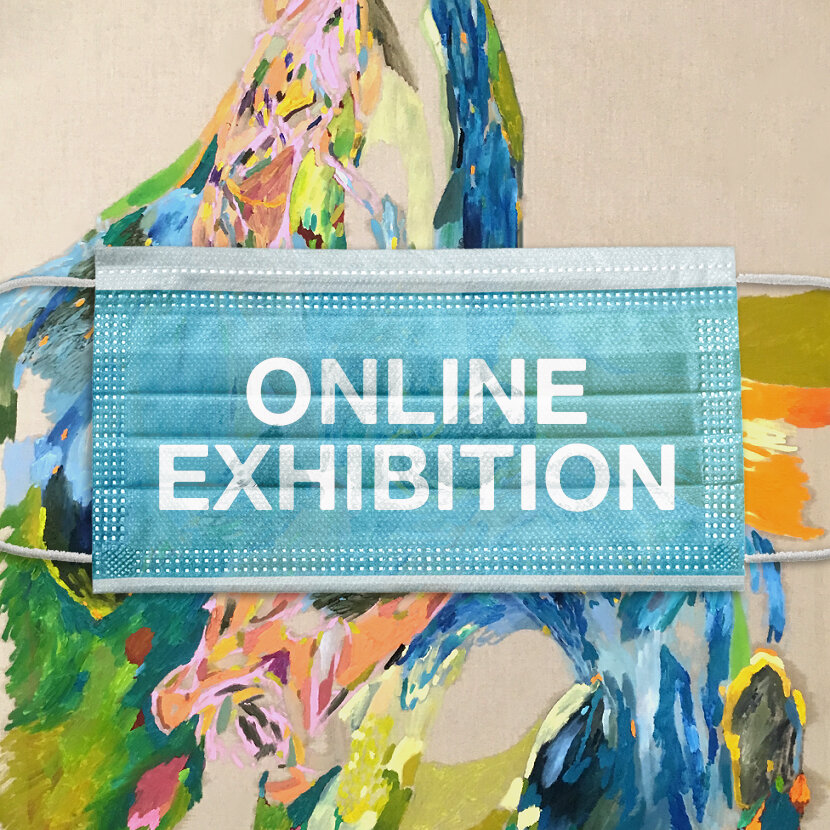
Lucy Jane Turpin – CHE BELLO 

Black Koki – ALWAYS SMILING 

Lazi Mathebula – SHADOWS OF MY FREEDOM 
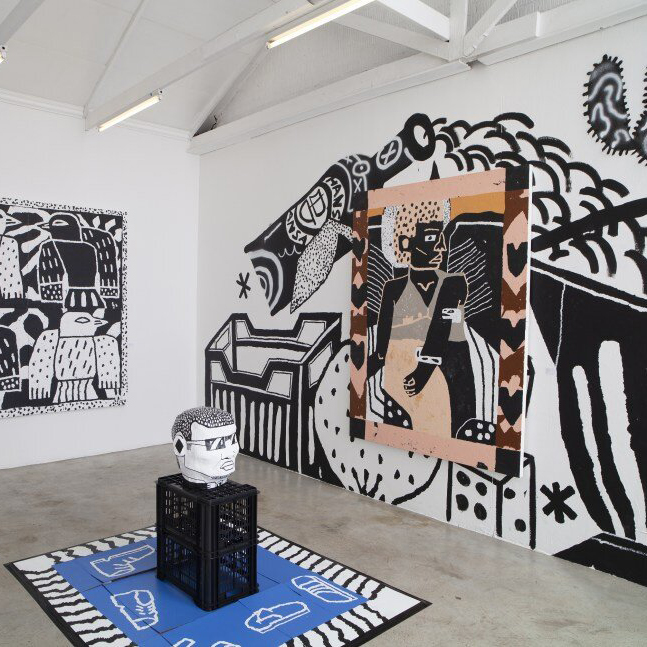
Kylie Wentzel – SWEAT 
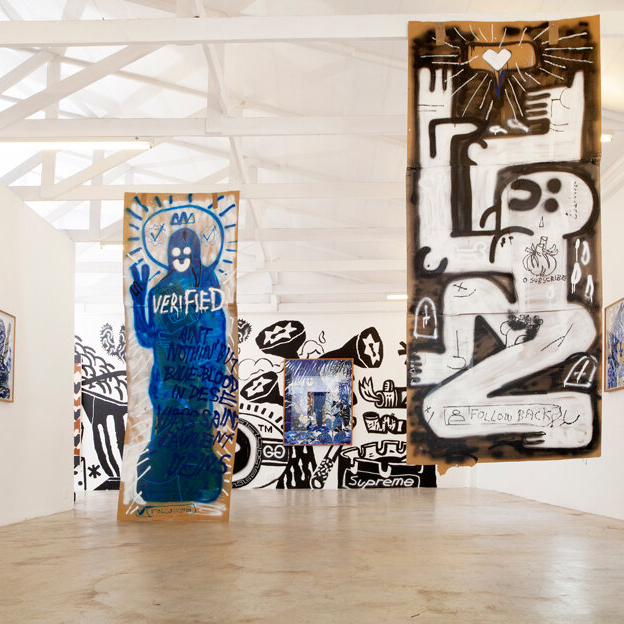
Louis de Villiers – SACRED CURRENCY 
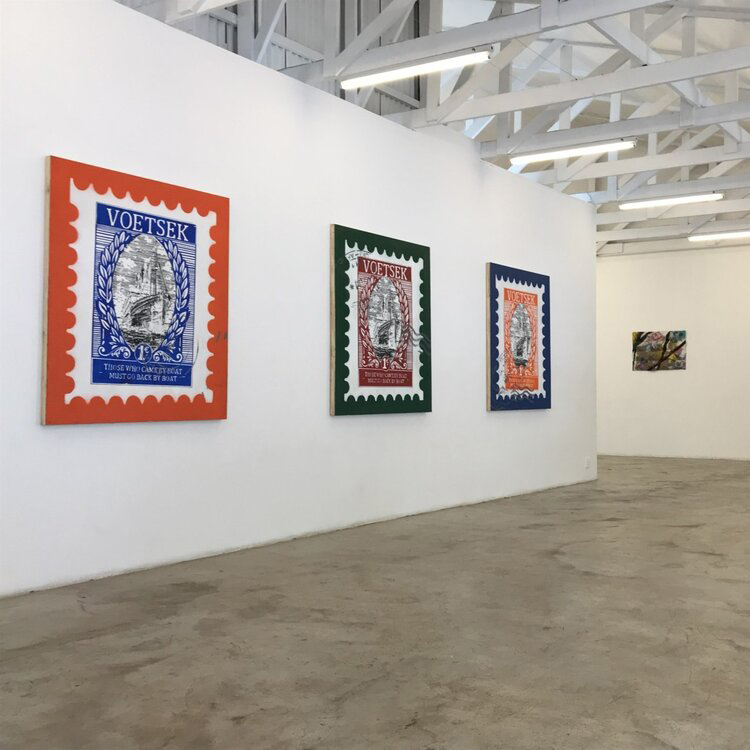
Group Exhibition – POST STREET 

Maaike Bakker – TERMS & CONDITIONS / TO BE AIMLESS 

Nathan Vuuren – RABBLE ROUSER
Images courtesy of KALASHNIKOVV Gallery
CLICK HERE TO VIEW EXHIBITIONS
Usually, we have two group shows a year, a summer and winter show. Interspersed into that, we have our solo shows and occasionally a duo show. For our group shows, it is sometimes nice to show all of the artists we represent to create a dialogue for ourselves and to manifest a bigger picture for people to understand Kalashnikovv and the development thereof from year to year. The framework of the solo shows are defined by the artists themselves and we assist curatorially in terms of exhibition installation.
HOW DOES KALASHNIKOVV GALLERY INTERACT WITH OR REPRESENT DIFFERENT ARTISTS?

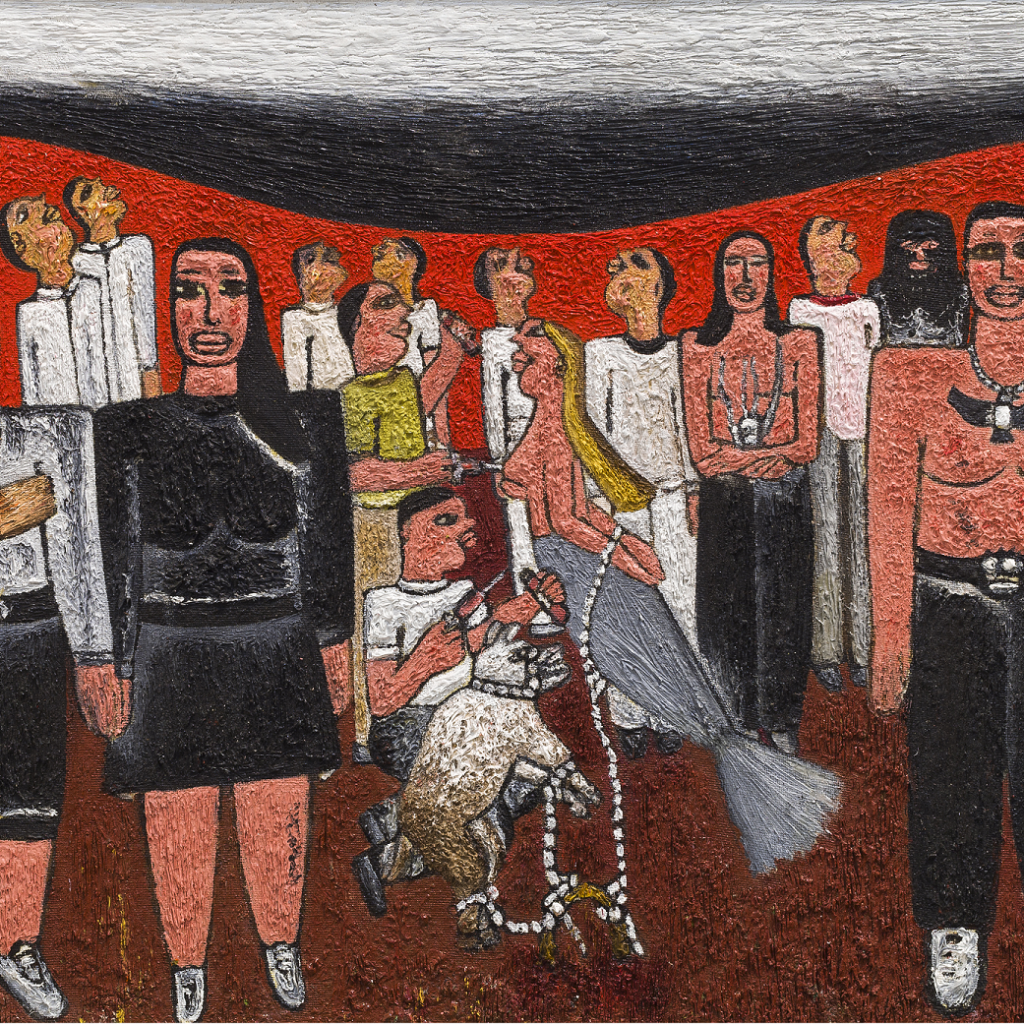
Alfred Thoba 
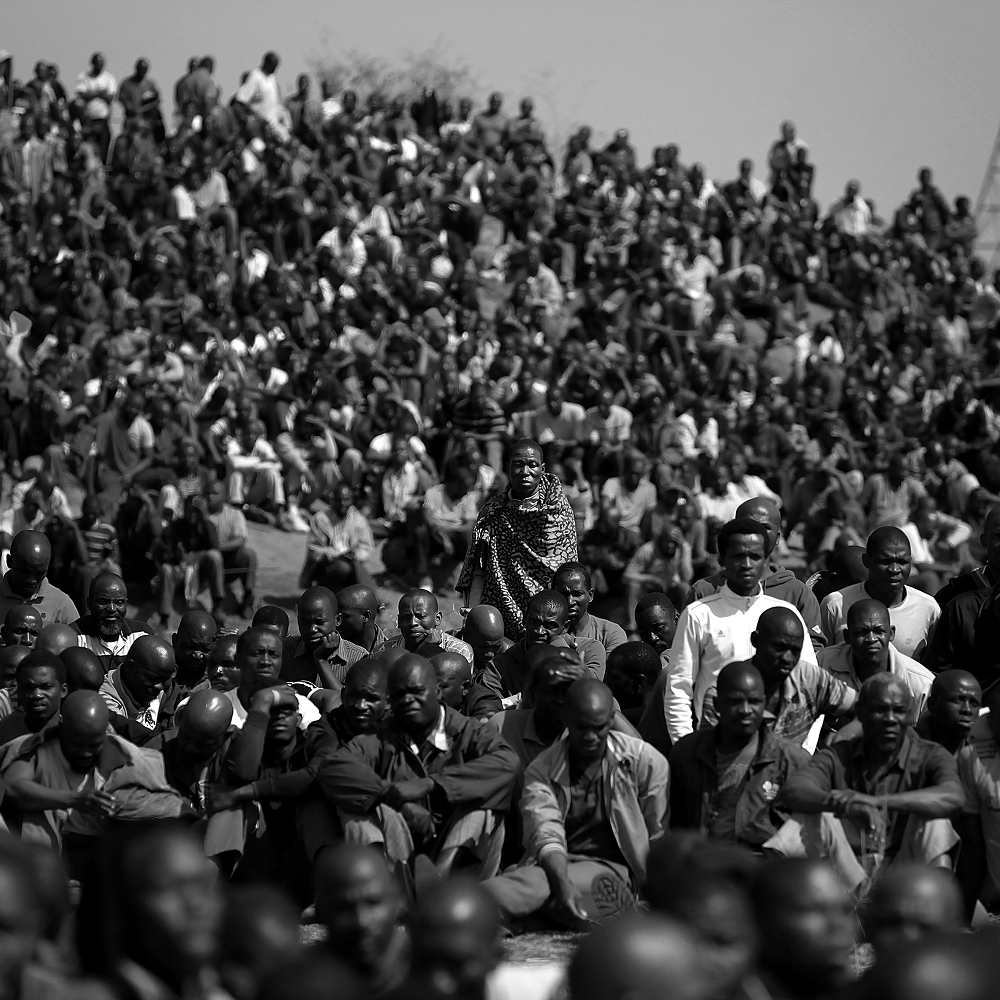
Alon Skuy 

Ayanda Mabulu 

BLACK KOKI 

Craig Smith 

Conrad Botes 

Daniel Levi 

Elizaveta Rukavishnikova
Images courtesy of KALASHNIKOVV Gallery
CLICK HERE TO VIEW MORE ARTISTS
The artists that we represent will often be exhibited in the main space of the gallery whereas the project room is dedicated to so-called project artists, affiliated artists, who are often artists that we are exhibiting for the first time. It is important for us to see whether an artist gels with the overall ethos of Kalashnikovv. So once again, it goes back to the notion of splitting between a traditional gallery and a more experimental way of working.
HOW WOULD YOU DEFINE THE ETHOS OF KALASHNIKOVV?
There is usually a certain challenging aesthetic, based on quite a revolutionary understanding of socio-political engagement by a lot of our artists. Questioning the status quo at any given time. In addition, we curate and choose artists who push boundaries (conceptually and aesthetically), that we find poignant and pertinent or reflective of history at any given time. Overall, work that is challenging and disruptive.
CAN YOU TELL US MORE ABOUT THE VARIOUS ARTISTS THAT KALASHNIKOVV REPRESENTS?
We represent both established artists and young emerging artists. Primarily, we focus on South African contemporary art. The majority of our artists are based between Joburg, Cape Town and Durban. Some of the artists we have worked the longest with would be Louis de Villiers, formally known as SKULLBOY, Craig Smith and Ayanda Mabulu.


Louis de Villiers 
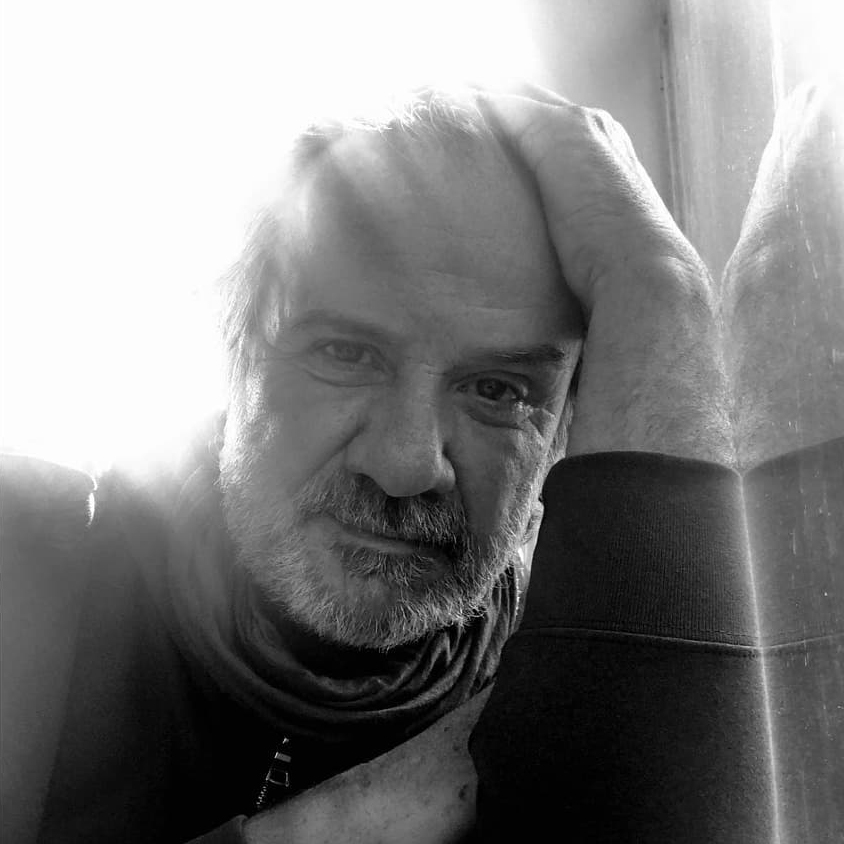
Craig Smith 
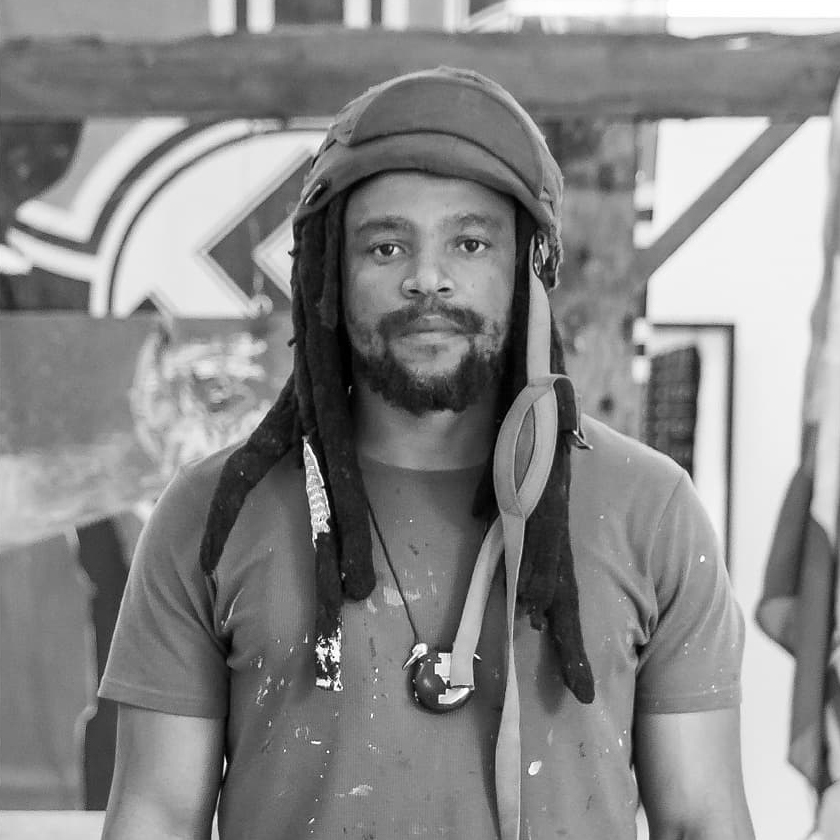
Ayanda Mabulu
Images courtesy of KALASHNIKOVV Gallery
For the past two years, we have been working with Alfred Thoba who has been in the South African art world for a long time, essentially working as an anti-Apartheid artist and who is currently in his seventies. We have also started to work with a lot of younger artists now and others that traverse multiple disciplines. Our programme is constantly developing and undefined, yet joined by a similar ethos.
KALASHNIKOVV COULD BE CONSIDERED ATYPICAL FOR A GALLERY AS IT IS AN ARTIST-RUN SPACE, WOULD YOU AGREE WITH THIS?
Interestingly enough, in South Africa, the concept of an artist-run space is quite unusual. It has occurred a few times, the earliest proponent was perhaps Gordon Froud who has been doing it for years. Banele Khoza is the latest manifestation of an artist-run space. It is definitely not a new thing and internally there are many examples. It works for an artist to also work as a curator because identifying with the exhibited artists becomes easier – in terms of technical ways of producing a practice. Some might say, it is more advantageous to be an artist and run a gallery. But we don’t say that there is a right or wrong way of doing something.
HOW DOES KALASHNIKOVV FEEL ABOUT SOUTH AFRICAN ART HISTORY?
I prefer to think that my co-founder, Matthew and myself are making history. We are not a museum and museums exist to showcase art that has come. We are here to focus on art that is to come. We are making history.
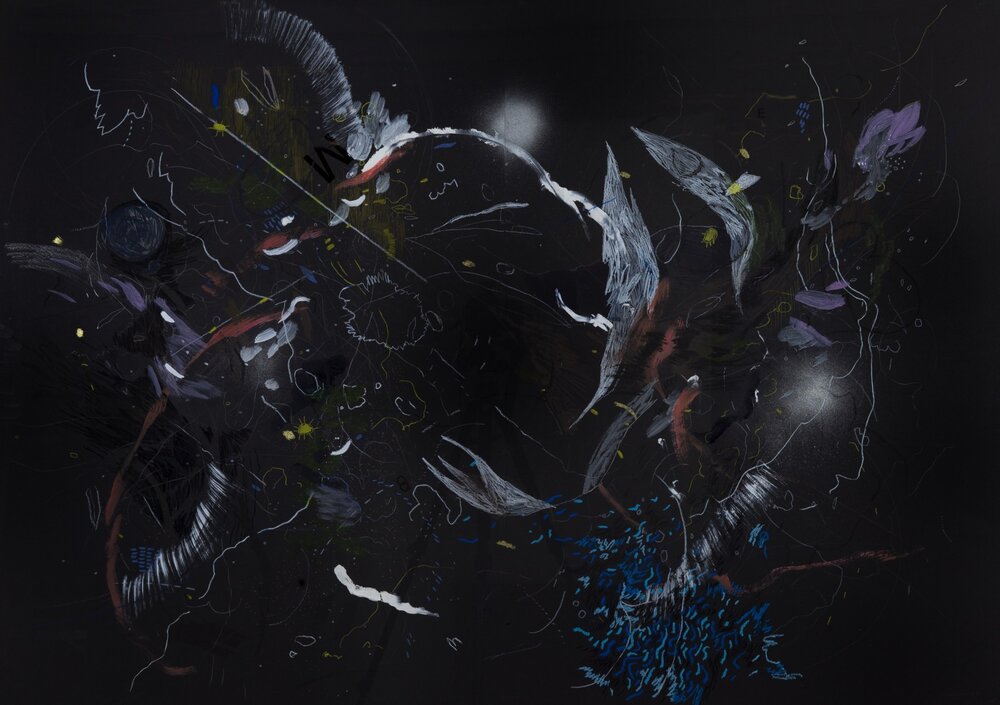

Event Horizon (2019)
Mixed media on archival cotton paper
For additional information and queries, please contact Kalashnikovv Gallery here


